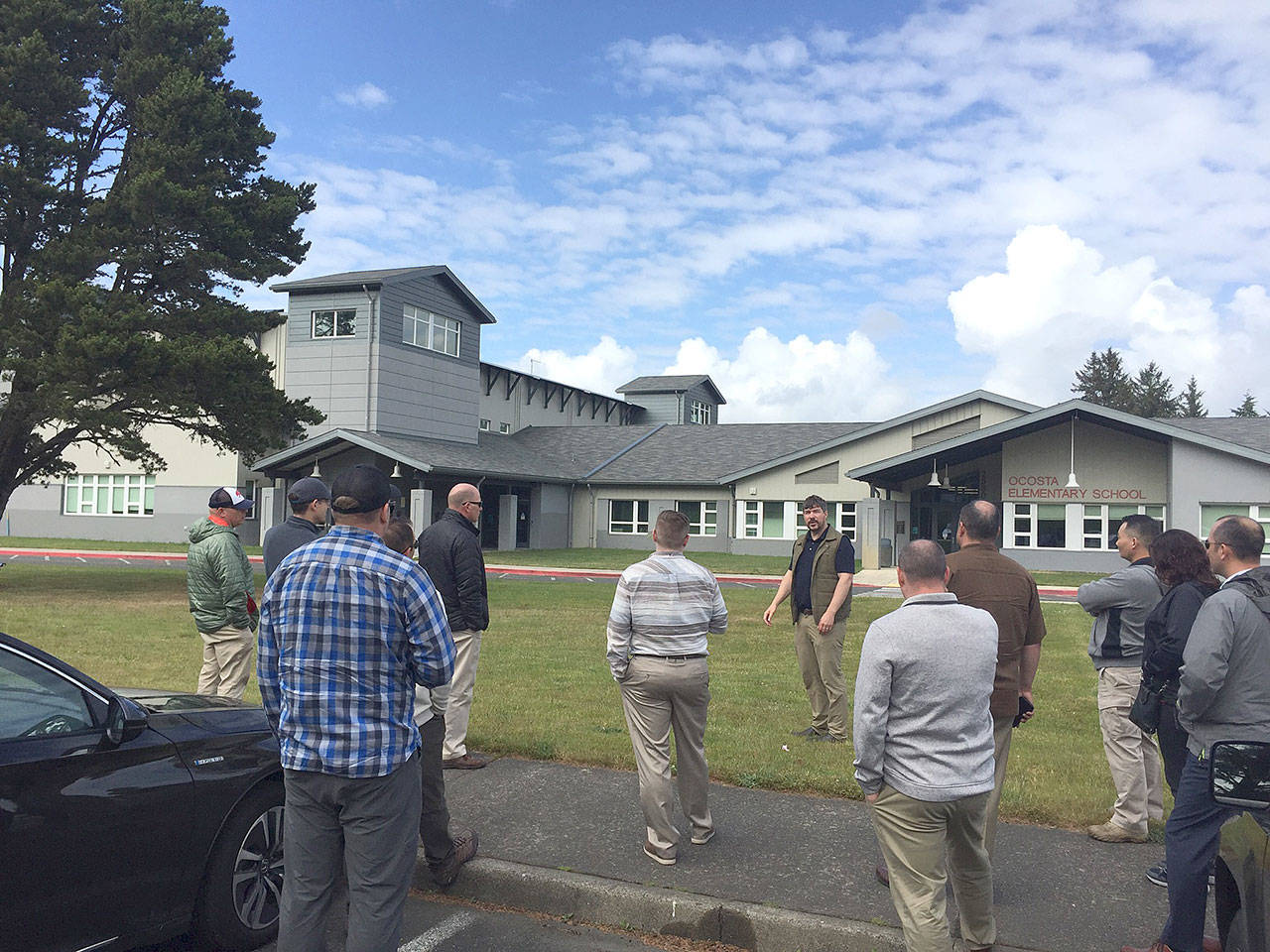PACIFIC BEACH — In the moments following a massive Cascadia Subduction Zone Earthquake, many Washingtonians could find themselves isolated, trapped or closed off from the rest of the state due to congested roadways, down trees or broken bridges. Coastal cities and towns could be the most at risk with a potential of a tsunami following a major earthquake.
That is why soldiers and airmen from the Washington National Guard Joint Enterprise Staff and Washington Emergency Management Division professionals traveled to Seabrook for a two-day coast staff ride and tsunami workshop. Guardsmen and state emergency management professionals met with local first responders, county and local emergency managers, Washington State Parks, Washington State Patrol and tsunami experts from the University of Washington to discuss the critical issues specific to the coast.
“We started at Cape Disappointment, then traveled up the coast line to see what these towns and cities are up against,” said Col. Kevin McMahan, director of operations for Joint Force Headquarters. “At each stop Maximilian Dixon would give us a breakdown of the damage that could occur during a tsunami.”
Guardsmen and first responders discussed potential evacuation time, assessing the population to include tourists and homeless populations, traffic management, mass care and public messaging.
The Washington coast is an extremely popular getaway for many in the Pacific Northwest, with towns like Seabrook, Ocean Shores, Long Beach, Westport and Ocean Park drawing close to three million tourists each year. Visitors to the area do not travel with more supplies than needed for their trip, but also are not counted into census numbers when considering first responders needs.
“At any given time the Washington coast can have 10,000 tourists that are not accounted for in the current population assessments, those individuals will need help too,” said McMahan. “We have to plan for every scenario during any time of the year.”
The Washington Military Department has been particularly focused on the potential of a Cascadia Subduction Zone earthquake since 2013. In June 2016, more than 20,000 participants took part in the Cascadia Rising exercise that tested the Guard and Emergency Management’s response plan. In the aftermath of Cascadia Rising, the Military Department identified that people needed to prepare for more than three days on their own. In 2017 Washington and Oregon agreed that all citizens should be 2-Weeks Ready in the event of a major event.
“We identified gaps in our initial response plan, so we tested it, refined it, and are consistently testing it,” said McMahan. “We know it’s not perfect, but the joint staff is meeting with local emergency managers to always make it better.”
In 2018, Dixon and other members of the Washington Emergency Management Division traveled to the coastal cities to discuss many topics, including the alert system and potential evacuation routes in the area.
“Events like this are great, the more information and better coordination we develop with one another is important,” said Dixon. “What we have learned from disasters and over time is that people are going to need help from one another.”
Find out more about tsunami preparedness -https://mil.wa.gov/tsunami
Joseph Siemandel is a major in the Washington National Guard and works for the Guard’s Public Affairs Office on Camp Murray. He’s involved in public education awareness regarding potential natural disasters.



